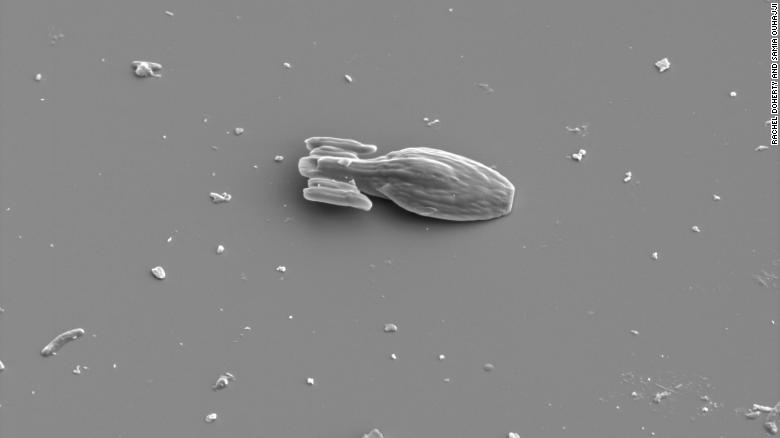A group of physicists at a university in the Netherlands 3D printed a microscopic version of the USS Voyager, an Intrepid-class starship from Star Trek.

The miniature Voyager is 15 microns (0.015 mm) long and is part of the Leiden University project researchers. The purpose of the project is to understand how the shape affects the movement and interaction of the microswimmer.
Microfluidizers are small particles that can interact with the environment through chemical reactions to move by themselves in the liquid. The platinum coating on the microfluidizer reacts with the hydrogen peroxide solution placed in it and pushes them through the liquid.
One of the authors of the study, Samia Ouhajji, told CNN: “By studying synthetic microswimmers, we want to understand biological microswimmers.” “This understanding can help develop new drug delivery tools. ; For example, micro-robots can automatically swim and deliver drugs to the desired location of the human body.”

By using 3D printers, scientists discovered that they can print microswimmers of any shape, including ships and spaceships. This helps them find out the effect of each shape on the movement of swimming particles.
Although most people don’t understand the relationship between Voyager and science, Jonas Hoecht, one of the co-authors of the study, had his own reasons to copy the ship.
Wahaji said: “In the last week of his project, I promised him that we can print any shape he likes.” “As a main fan of Star Trek, he chose USS Voyager. In addition, it also showed that we can print. The shape is almost infinite.”
In their project, the physicists also printed shapes such as boats, clovers and spirals, and the shape of each object affects their swimming behavior.
In addition to understanding how to use microswimmers to clean wastewater or deliver drugs to the body, the experiment will also help scientists learn more about biological swimmers such as sperm and bacteria and how they spread in the body.

Leave A Comment